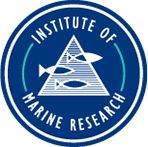Official presentation of the results of the 2018 fishery resources and ecosystem surveys in Myanmar waters
High-level representatives from Norway and Myanmar, together with the FAO Representation, gathered yesterday in Nay Pyi Taw, Myanmar, for an official presentation of the results of the marine ecosystem survey conducted in the country's waters in 2018. This survey formed part of a regional coverage of the Bay of Bengal under the EAF-Nansen Programme, and aimed at collecting information on the pelagic and demersal fish resources, valuable for providing further advice on fisheries management. During the ceremony, the survey report, documenting the work carried out and the main findings, was handed over to the government of Myanmar for further implementation. The FAO field identification guide to the living marine resources of Myanmar was also delivered. This guide provides unique reference to the major taxonomic groups, including fish, crustaceans and molluscs, which can be encountered in the fisheries landings, on the market, and at sea.
 High-level participants at the official presentation of the results of the marine ecosystem survey in Myanmar waters in 2018 © FAO High-level participants at the official presentation of the results of the marine ecosystem survey in Myanmar waters in 2018 © FAO |
The surveys, conducted during different periods of the year with the R/V Dr Fridtjof Nansen, have provided unique insights into the marine resources and ecosystems of Myanmar, which is very valuable for fisheries management decision. Furthermore, the FAO Species Identification Guide for Myanmar, with its 1,438 species, highlights high diversity of fish present in the country's waters," explained Merete Tandstad, coordinator of the EAF-Nansen Programme at FAO.
With 2,832 kilometres of coastline, and an extensive Exclusive Economic Zone (EEZ) of about 486,000 square kilometres, Myanmar possesses rich marine fisheries resources. The fisheries sector is an important source of livelihood and food security in the country. It constitutes the second largest contributor to employment and income, providing jobs to an estimated 3 million people. Current studies on Myanmar marine resources are rather limited. Therefore, the three most recent research surveys were carried out (during different periods of the year) on board the vessel Dr Fridtjof Nansen in Myanmar waters in 2013 (December), in 2015 (May), and in 2018 (September), providing scientists with unique insight into national marine resources and ecosystems. The fourth regional survey, including Myanmar, is planned for 2021.
The objective of the 2013 and 2015 surveys was to gain a comprehensive overview of the ecosystem, by collecting data related to distribution and diversity of fish (pelagic and demersal), and environmental conditions in the surveyed areas (temperature, salinity, oxygen etc.). The 2018 at-sea expedition was part of the new phase of the Nansen Programme (2017 – 2021), focused on "Supporting the Application of the Ecosystem Approach to Fisheries Management considering Climate and Pollution Impact." In addition to providing key information on the fish abundance and distribution, and the overall ecosystem, the 2018 survey was designed with a strong focus on fish early life stages. Sampling was further expanded to support the implementation of the EAF-Nansen Science Plan, in relation to marine debris and microplastics, ocean acidification, and food safety and nutrition. Analysis of critical habitats and areas, which serve as spawning and nursery grounds for young commercial species, was an additional important objective of this study.
 Ceremony of handing over the survey report to the government of Myanmar © FAO |
The 2018 cruise took place from 24 August to 30 September and was organised in a close partnership between the EAF-Nansen Programme and the Department of Fisheries in Yangon. Several national universities (University of Yangon, Myeik, Pathein, and Mawlamyein) and local NGOs have also joined. Overall, 25 scientists from Myanmar participated in the survey during the total of 36 days at sea. The area explored in 2018 included three main coastal zones of Myanmar: the Rakhine Coast, the Ayeyarwady Delta and Tanintharyi Coast. Altogether, 1,016 species were recorded/documented during the survey, and follow up work on specimen collected has resulted in the identification of a relatively high number of new fish populations.
Overall results of the 2018 Myanmar survey demonstrate that the ecosystem still shows strong signs of overfishing, with current biomass of demersal and pelagic stocks well below the levels indicated in the first surveys with the RV Dr Fridtjof Nansen in 1979-80. Management actions, such as reduction in fishing effort, are urgently required to rebuild overexploited stocks, as per Myanmar's long-term vision: "to ensure a sufficiency of fish supplies not only for the present entire national people but also for future generations, by conserving the fisheries resources with sustainable fisheries at all times."
"Myanmar has a long fishing tradition/history, and the fishing sector plays a crucial role in securing food and livelihoods for its coastal population. But, our marine ecosystem is facing serious challenges due to population growth, urbanization and industrialization along the coast. Our seas are also highly susceptible to land-based pollution. Hence, we need to pay a great attention to prevent our marine living resources from over-exploitation," stressed, Dr. Aung Thu, The Union Minister for Agriculture, Livestock and Irrigation.
Above all, the three surveys 2013-2018 demonstrate that Myanmar has unusually high diversity of fish (and most probably other marine organisms), including several endemic species. This places a special responsibility on the country to protect its unique ecosystem for future generations.



